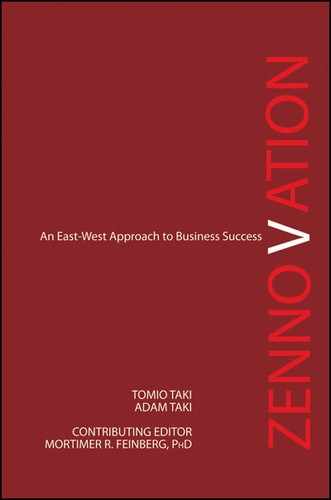Introduction
Over the past 75 years, I have consulted for, financed, or directly managed both private and public companies on nearly every continent. I have been involved in ventures ranging from the birth of high-definition television and video-editing services companies such as the Rebo Group in the United States, to owning and operating private golf clubs in Honolulu, Hawaii, and Raray, France. I helped companies such as Issey Miyake and Wacoal USA rise from the ashes of potential bankruptcy, and I have worked to streamline and grow corporate giants such as Samsung in South Korea and Koor Industries, formerly an arm of the Histadrut, in Israel in the 1980s. I was also responsible for bringing Western fashion to Japanese consumers and was the first to implement mass-manufactured sportswear in the United States when I bought the Anne Klein Company in the early 1970s and launched Anne Klein II, what the fashion industry today calls a bridge line. I am on the board of numerous fashion companies, as well as trustee for a handful of educational institutions in the United States and overseas.
I mention these facts not to gloat, but to delineate the breadth of my life experience. I regret that this book cannot delve into all of these stories and learned lessons. However, I believe that it illustrates whom I have become and what I have learned as an international consultant and manager.
Sharing discourse and advice with businesspersons—ranging from those managing mom-and-pop shops to high-powered executives from across the globe—and therefore exposing myself to the dazzling panoply of cultures and industries has allowed me to transform my perspective. Although I am neither an anthropologist nor a sociologist, I have learned that every nation has a distinct way of conducting business. Language has become less of an obstacle across borders; instead, cultural difference can prompt or hinder communication among businesspersons. Even within many countries, slight differences in latitudinal or longitudinal lines breach social circles. In this light, the only essentialism left in the discussion on offering an international worldview is difference itself.
Alternatively, there are lines of comparison as deep as those of difference. Everyone has goals to accomplish, accompanied by the desire for recognition. Lest we are all forgotten generations from now, we all want to make our mark—not only in the histories of our contemporaries but within native, national narratives. For this very reason, I have chosen to write this book—a testament to my life that my grandchildren and their children can read so that they may learn from my experiences.
With this in mind, I turn to my story as a child who grew up in World War II Japan to become the president of a generations-old textile and fashion company followed by my move to the United States in search of greater opportunity. Much of my personal history has been omitted to fit the scope of this book—not to fragment my story into its various experiences, but to offer a cohesive narrative with all of my most important life lessons. My hope is that every reader may unearth a few points for self-reflection as an entrepreneur, manager, problem solver—or simply an individual.
